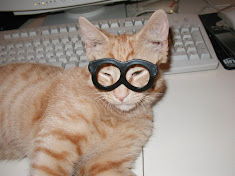 |
| Snowy, the White Gerbil, Getting a Bit of Exercise by benmckune |
Before bringing your gerbil home, prepare its habitat. Gerbils can be kept in wire cages or glass tanks (such as aquariums). Gerbils love to chew so plastic cages are not a good idea as they will chew through them. Glass tanks make the best gerbil cage but make sure it has a wire mesh top to provide adequate ventilation. As gerbils are very active, the bigger tank you can afford the better. Gerbils are great jumpers so make sure the top is secure!
Provide your gerbils with toys and things to gnaw on to prevent boredom. Ramps, platforms and ladders will also be appreciated by your pets as they love to climb and explore. A solid spokeless exercise wheel will ensure they don't get their tails pinched or snagged when exercising.
As gerbils love to burrow, make sure you put an adequate amount of bedding for them to burrow in. Hay, tissues and shredded paper will do. Never use pine or cedar for any rodents as it is unsafe and can cause respiratory infections, tumors, kidney and liver damage.
Commercial gerbil seed mixes and pellets or lab blocks are available for feeding your gerbils. A varied diet is the best and you should try to offer your gerbils a combination of each. Occasional treats such as vegetables and fruits, nuts and sunflower seeds can be given, as can small pieces of cheese, raisins, boiled egg and mealworms. Dog biscuits can be offered sparingly and on occasion as well. Remember that treats are not to be given in large quantities, only as a training tool or treat so as to avoid diarrhea and the risk of your gerbils becoming overweight.
Author Resource: Written by Russell R. Fesio
Russell likes to write on various topics and has been doing so for several years. His most up-to-date internet site is http://tuftedheadboard.org which provides people with information on bookshelf headboards.



0 comments:
Post a Comment